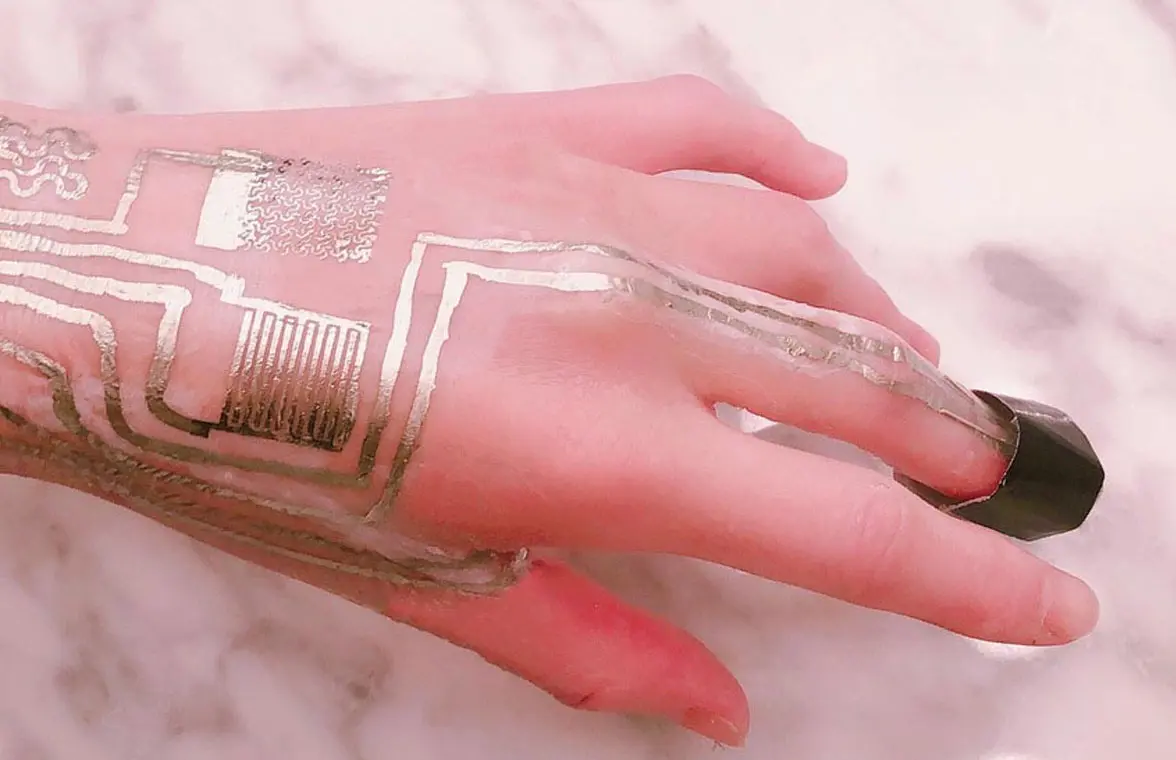
Researchers at Penn State University in the USA have developed a wearable wireless sensor that can be printed directly onto a person’s skin to take precise biometric measurements and transmit data to an NFC smartphone or similar device.
“The sensors are capable of precisely and continuously capturing temperature, humidity, blood oxygen levels and heart performance signals,” the researchers say.
“The researchers also linked the on-body sensors into a network with wireless transmission capabilities to monitor the combination of signals as they progress.”
The sensors can be printed directly onto the skin using a process developed by the research team that bonds a sensor’s metallic components at room temperature, rather than at the high temperatures required by other bonding or sintering processes.
Printing technique
“The room temperature sintering aid layer consists of polyvinyl alcohol paste — the main ingredient in peelable face masks — and calcium carbonate, which comprises eggshells,” the research team adds.
“The layer reduces printing surface roughness and allows for an ultra-thin layer of metal patterns that can bend and fold while maintaining electromechanical capabilities.
“When the sensor is printed, the researchers use an air blower, such as a hair dryer set on cool, to remove the water that is used as a solvent in the ink.”
Once a sensor is no longer needed, it can be removed with warm water without damaging the skin and its reusable components can be retrieved.
The sensors have a range of potential applications, including healthcare monitoring, diagnostic testing and the detection of disease, as well as the monitoring of environmental conditions, such as the presence of harmful gases.
The research team, led by Penn State’s Larry Cheng, is now planning “to alter the technology to target specific applications as needed, such as a precise on-body sensor network placed to monitor the particular symptoms associated with Covid-19”.
Next: Visit the NFCW Expo to find new suppliers and solutions